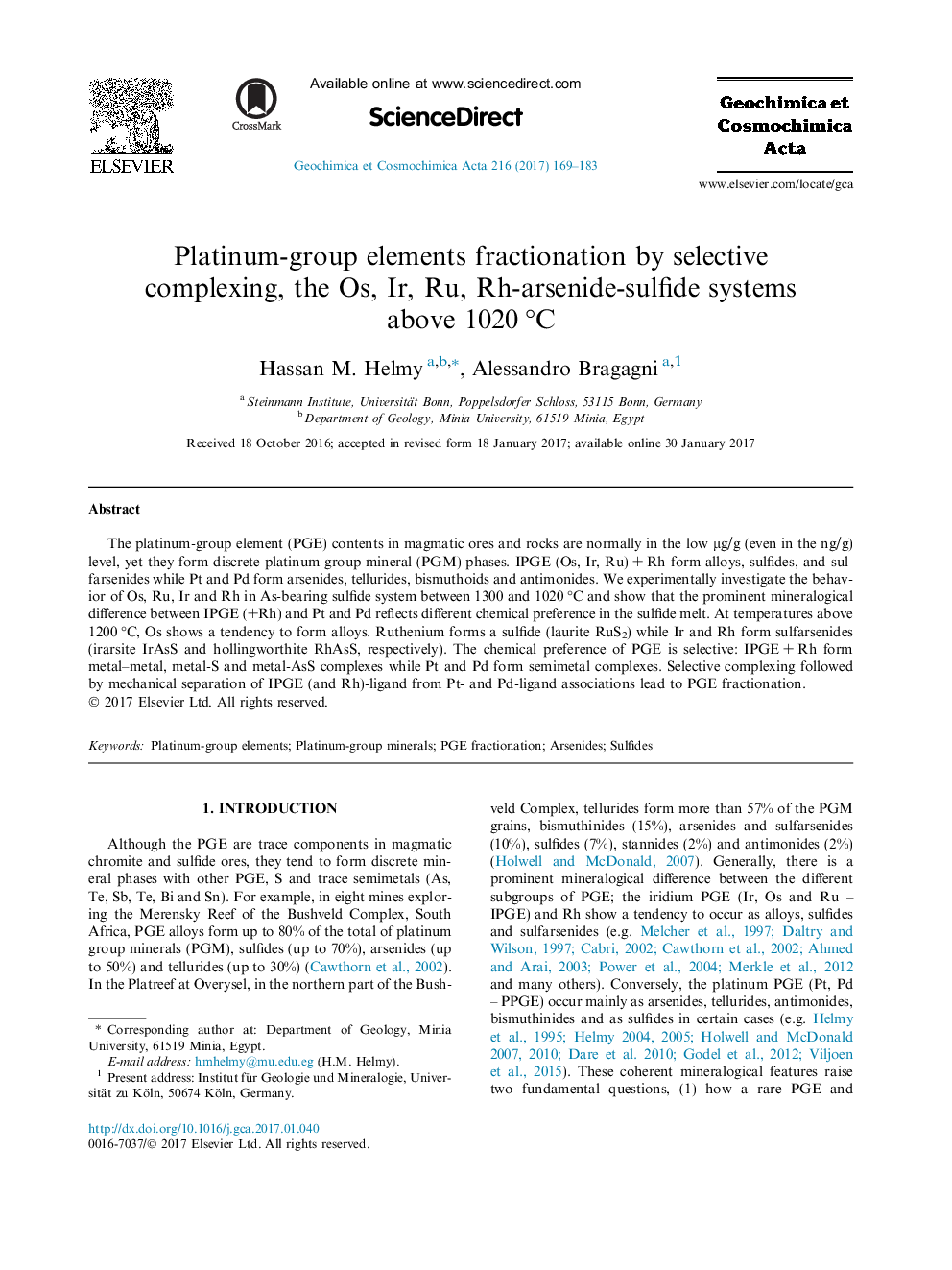| Article ID | Journal | Published Year | Pages | File Type |
|---|---|---|---|---|
| 5783115 | Geochimica et Cosmochimica Acta | 2017 | 15 Pages |
Abstract
The platinum-group element (PGE) contents in magmatic ores and rocks are normally in the low μg/g (even in the ng/g) level, yet they form discrete platinum-group mineral (PGM) phases. IPGE (Os, Ir, Ru) + Rh form alloys, sulfides, and sulfarsenides while Pt and Pd form arsenides, tellurides, bismuthoids and antimonides. We experimentally investigate the behavior of Os, Ru, Ir and Rh in As-bearing sulfide system between 1300 and 1020 °C and show that the prominent mineralogical difference between IPGE (+Rh) and Pt and Pd reflects different chemical preference in the sulfide melt. At temperatures above 1200 °C, Os shows a tendency to form alloys. Ruthenium forms a sulfide (laurite RuS2) while Ir and Rh form sulfarsenides (irarsite IrAsS and hollingworthite RhAsS, respectively). The chemical preference of PGE is selective: IPGE + Rh form metal-metal, metal-S and metal-AsS complexes while Pt and Pd form semimetal complexes. Selective complexing followed by mechanical separation of IPGE (and Rh)-ligand from Pt- and Pd-ligand associations lead to PGE fractionation.
Related Topics
Physical Sciences and Engineering
Earth and Planetary Sciences
Geochemistry and Petrology
Authors
Hassan M. Helmy, Alessandro Bragagni,
